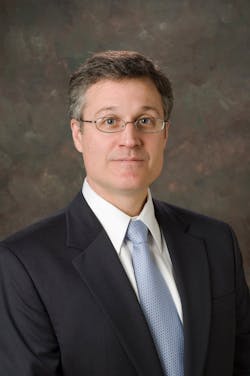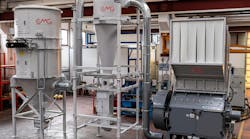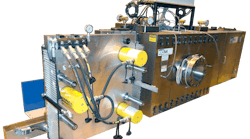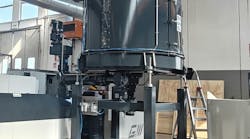By Bruce Geiselman
Public awareness of the impact of plastic waste on the environment is at an all-time high, and many municipalities have responded by banning single-use plastic products, said John P. Christiano, VP of technology at Davis-Standard.
Targeted items include PE grocery bags, PS take-out food containers and straws, he said.
“The plastic waste problem has been with us for a while but escalated in 2017 when China stopped accepting the world’s plastic waste streams,” Christiano said. “This created a crisis to redirect 8 million tons of waste per year. Municipalities are still reeling from this impact and searching for a sustainable solution. We also have a more environmentally conscious population with a greater awareness of sustainable products than previous generations.”
The company has seen increased sales of extruders for recycling during the past two years, and growing interest among customers in bioplastics for producing alternatives to banned items such as plastic straws.
For extrusion companies, post-industrial scrap, including thermoforming scrap, edge trim, start-up scrap and off-spec products, is relatively easy to recycle. These materials are size-reduced and reincorporated into the feedstock for the extrusion line and then re-extruded, Christiano said.
Post-industrial film scrap in the form of off-spec rolls is more difficult to reprocess and requires additional processing steps. Typically, the film must be removed from the rolls and size-reduced prior to re-extrusion. This results in low-bulk-density feed stock that requires special equipment to cram or densify the material prior to or during extrusion, he said.
Postconsumer plastics are much more difficult to recycle in part because of contamination in the form of dirt, food waste and chemicals, Christiano said. The second complication is the fact that plastics collected in municipal recycling streams include a mixture of incompatible plastics that must be separated before processing. Most plastic film used in food packaging is not recycled at all and must go to a landfill. Incompatible materials can contaminate the recycling stream.
Once postconsumer plastics are separated and washed, they can be reintroduced to the extrusion process.
“The extruder used for this purpose must be equipped for several tasks, including feeding, melting, devolatilization, pressurization, filtration and pelletization, all in one step,” Christiano said. “Two of these tasks, devolatilization and filtration, are critically important to ensure a usable end product.”
Devolatilization removes moisture and chemical compounds.
“Surface washing will not remove chemical contaminates that have leached into the plastic,” Christiano said.
Filtration removes remaining physical contamination.
“The end product needs to be totally free of foreign particles, crosslinked or degraded material,” Christiano said. “The type of filtration system chosen will depend on the level and type of contamination.”
Bioplastics, including PLA, polyhydroxyalkanoate and polyhydroxybutyrate, are much more temperature-sensitive than conventional thermoplastics, but they have been successfully processed on conventional extrusion equipment, Christiano said.
“It is essential to ensure the feed screw design is optimized for the intended application, and the extrusion system features a streamlined design without dead spots,” Christiano said. “Petroleum-based biodegradable plastics require similar design considerations.”
Bioplastics are not designed to be reprocessed and need to be composted in the presence of water, air and micro-organisms in the soil, Christiano said. This requires an infrastructure that includes composting and separation from non-biodegradable postconsumer waste.
Bruce Geiselman, senior staff reporter
Davis-Standard LLC, Pawcatuck, Conn., 860-599-1010, www.davis-standard.com






